
Art Lucas
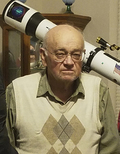
As many of you already may know, Art Lucas took his own personal journey to the stars July 4, 2022. He will be and has been sorely missed as a Husband, Father, Grandfather, Great Grandfather, Colleague and Friend. These pages remain as a testament to his love of astronomy that he was able to pursue extensively in his 'retirement'. It's not everybody that on the eve of their 91st birthday decides they are going to immerse themselves in learning the ins and outs of general relativity :)
Walk about the Solar System
Art's influence in the solar system lives on! He has recently had an 8-km asteroid named after him by one his colleagues from IOTA, the International Occultation and Timing Association. John Broughton, an Australian amateur astronomer who has been very active with IOTA discovered this asteroid and processed the official naming.
The official citation from the Minor Planet Center (MPC) reads:
(112660) Artlucas = 2002 PX86 Discovery: 2002-08-14 / J. Broughton / Reedy Creek / 428 US nuclear physicist Arthur Lucas (1931-2022) worked in multiple fields of research as diverse as particle accelerators and radiotherapy. In retirement he pursued an interest in astronomy, including occultations. He was IOTA's Secretary and Treasurer from 2001 to 2007, and he organized their annual meetings around well-observed occultations in 2005 and 2016.
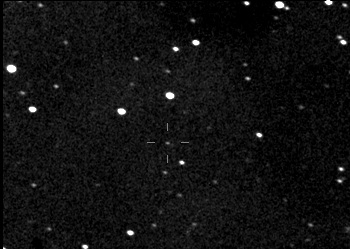
The asteroid is currently faint, at magnitude 20.2 in the constellation Cetus. John provided us an image from the time of discovery (the asteroid is in the crosshairs in the middle in the image to the left). This is a 4-minute exposure taken through a 10" Schmidt-Cassegrain telescope on August 15, 2002 taken on the day he reported the object to the MPC.
Dad's name is also on its way to Europa, one of the moons of Jupiter, on the Europa Clipper! The Clipper was launched October 14, 2024 and is set to reach Jupiter in April 2030. Read more about the "Message in a Bottle" program here.
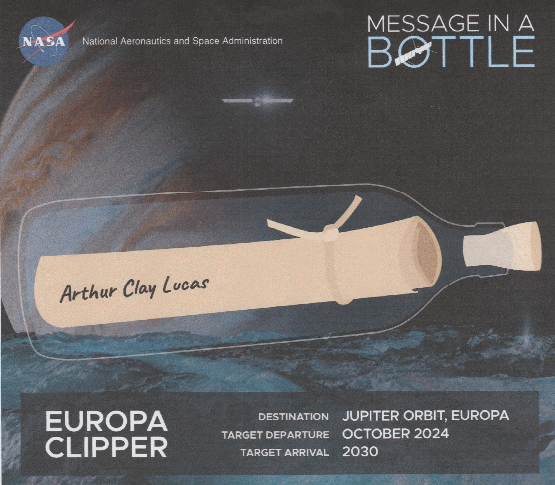
A Lifetime of Curiosity and Science
This website represents the work of retired nuclear physicist, Art Lucas. Art is a world expert in radiation measurement and personnel dosimetry as well as an avid amateur astronomer. His resume (linked here) begins to give some insight into the wide range of his professional work and accomplishments. The linked video is an interview produced by the Health Physics Society History Committee in June of 2000.
Bluebird Observatories
These amateur facilities were constructed for the amusement of a retired nuclear physicist and produce observations of interest to students, neighbors, friends, and himself. The author can be contacted alucas0217@aol.com.
Dark Matter for the Common Man: The Plan
Follow my progress as I explore dark matter through the tools available at Bluebird Observatories.
Thoughts on Searching for Asteroids

In preparation for the 2003 Meeting of the MPAPW I spent some time in studying low resolution spectroscopy as a way to characterize the surface reflection of asteroids. The target was to concentrate on 8-inch telescopes and attempt to characterize magnitude 16 or brighter. I recall the work in preparation for beginning NEO work using an f:2 adaption of the 14-inch telescopes. (pdf document)
F:2 Conversion of 14-inch Telescope

A recent project has involved the conversion of one of the 14-Telescopes to F:2. Here's a quick report on the project.
Recent Eclipse Adventures

Some comments and pictures of the 2017 Solar Eclipse and January 2019 Lunar Eclipse.
The Equipment of Bluebird Observatories

Take a peek inside the facilities that make up the Bluebird Observatory complex.
Lunar Grazing by Aldeberan
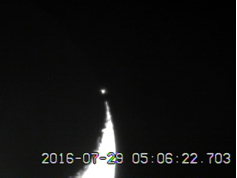
Occultations of stars by the edge of the moon can provide information about the profile of the moon. Take a look at images collected by the Oklahoma State University group during the July 29, 2016 grazing of the moon by the bright star Aldeberan.
Supernova 2013ev
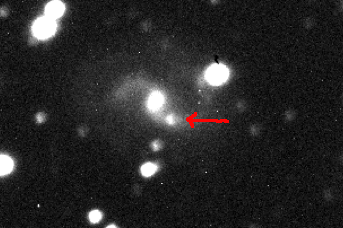
A supernova from August 2013 that hid in the Deep Sky observations unnoticed until now!
Stillwater Deep Sky


Inspired by the Hubble Deep Field images and increased tracking stability and adaptive optics capabilities at Bluebird Observatories, the images in the Deep Sky folder represent the stacking of long exposures of relatively "bare" chunks of sky. Isolux images are used to analyze features of the various galaxies analyzed.
A Tour of the Messier Objects

A library of Messier objects is being developed for use in planning measurements in and about these objects. The images were obtained by a standardized methodology so as to permit choosing the optics and analytical methods for further studies in and about these objects.
Galaxies and Nebulae


Miscellaneous color photos of galaxies and nebulae taken at Bluebird Observatories.
Planets

The wanderers of the solar system provide a number of photographic opportunities. As well, occultations of various small magnitude stars by pluto may provide some insights into the existence of debris in orbit around pluto.
Eris

Continuing the study of the minor planets, this report (pdf) (doc) discusses the tracking of Eris. The hope is that, if a potential occulations exists, the data precision will be sufficient to make the prediction real. Notes on the picture to the left.
Asteroids

Due to their size, asteroids are typically difficult to observe directly, but they are capable of reducing or eliminating the light from a star if they pass directly in front of them, creating an occultation.
IOTA, the International Occultation and Timing Association, is an organization of amateur and professional astronomers who use occultations between two objects to do such things as refine calculations of asteroid orbits.
Comets

Large balls of ice orbiting the sun in highly eccentric orbits, comets can be a lot of fun to photograph. Here are a couple of examples.